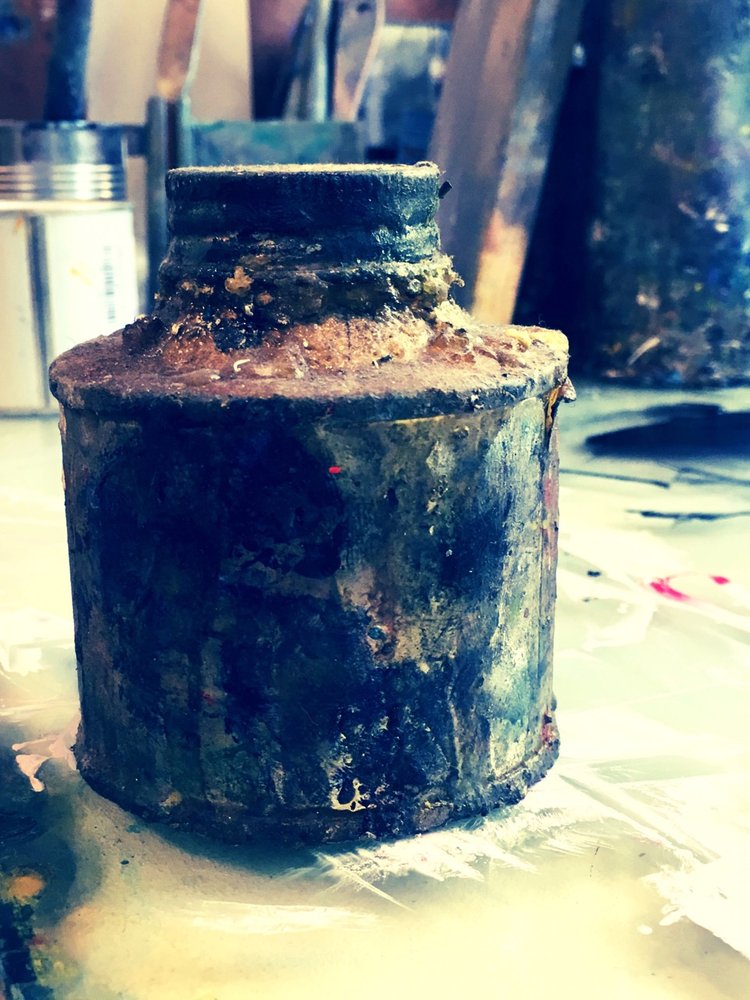Set within the rolling Ruthern Valley in North Cornwall, Hay Studio (now Camel Studio) was the perfect setting for this multi-media exhibition, curated in partnership with Susan Hay.
"Hooper is a Cornish painter, not only in origin and subject matter but also in the tradition deeply rooted in the St Ives group of artists from the immediate post-war period. At the vanguard of this movement were Patrick Heron, Terry Frost and Peter Lanyon.
Hooper cites Lanyon as particularly important to his development as a painter. Not only was he a friend and gliding companion of Jonathan’s father, but significantly he was a native Cornishman, unique amongst his St Ives contemporaries, with a particular and, unarguably, potent sense of place. Where Lanyon was often drawn towards historical events and mythology as metaphorical and allegorical devices for describing his relationship with his origins, Hooper is more concerned with the mechanics that create his landscape and that contribute both directly and more obliquely to his experience of that landscape. Hooper’s paintings convey the idea that landscape is something to be in, to be experienced, rather than simply to be looked at.
Memory is key to Hooper’s work; these are paintings generated from a distance. They are interested in ideas of exile and, as such, have a fugitive and, at times, romanticised relationship with actuality. In this sense the layering of paint becomes a metaphor for the laying down of memories. Also like Lanyon, Hooper uses the device of multiple views. Unlike Lanyon however, his variable is not space but time. Where Lanyon moved through his world and took snapshots of different views which he later superimposed or subverted, Hooper stands quite still and lets his world move around and in front of him.
Hooper’s source material is a small section of the North Cornwall Coast, from Port Isaac in the east to Pentire Head in the west. Each painting’s eventual outcome is then a response to a memory or sense of this place. It is evident that Hooper is beguiled by
the potential of paint."
From "Silence and Storm: Life at the Edge": Zorn Wilkes [New York 2013]


